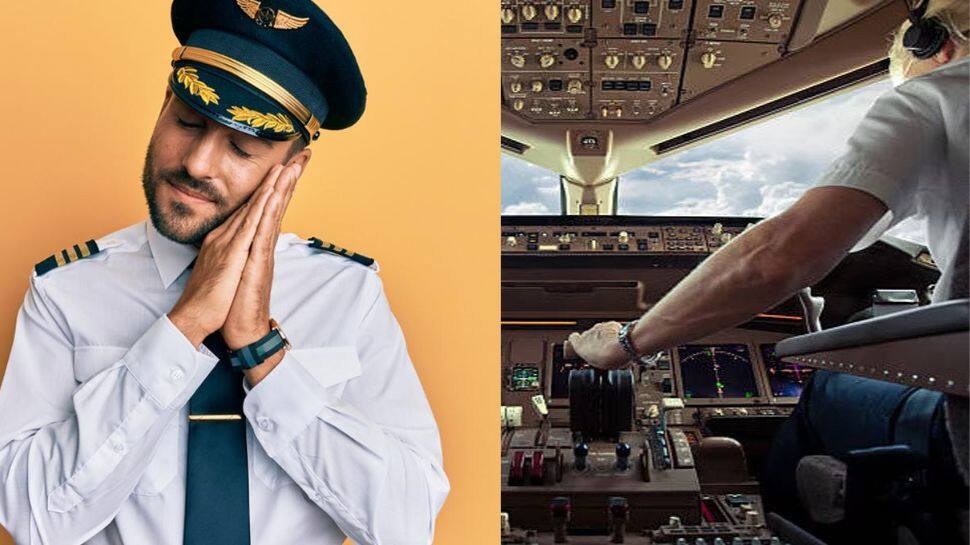We all want to feel secure when our plane takes off, whether we are on a round-the-world journey or just using some of our airline points for a quick weekend getaway. Because of this, airline employees, including pilots, are required to keep some trade secrets to themselves. These trade secrets don't jeopardise security, but some of what those in the business know would surprise the typical traveller. For instance, it was claimed in a 2021 luxury travel documentary that attractive persons are more likely to be randomly upgraded to fly first class. There are a lot of secrets that pilots know, but keep to themselves. A few of them are things you’re probably better off not knowing. And a few are secrets that, once you know them, can make air travel a little bit better.
Here Are 10 Pilot Secrets That You Might Not Be Aware About:
1) Less Fuel, More Worry
Despite the recent decline in aeroplane fuel prices, this is still a cost that is closely monitored. According to a pilot, airlines only fill their aircraft with enough fuel to carry them to their destination; but, if there is a delay, you can be required to land at a nearby airport.
2) There’s a secret spot for sleeping
It goes without saying that flying for longer than 12 hours at a time will make one tired, but some passengers might feel uncomfortable with the idea of their pilot taking a sleep. For this reason, crew rest compartments, or CRCs, are frequently stowed away in aeroplanes. These CRCs provide a modest, cosy area for both pilots and flight attendants to unwind and recover during lengthy flights. Many planes will have a place for the crew and a rest area for the pilots. These chambers, which could have small beds and curtains to block out light and noise, could be above or below the passenger cabin depending on the kind of aircraft.
3) Weather Delay
Weather delays are something that everyone has experienced. There is inevitably one traveller who checks the weather in the destination city and remarks that it appears to be fine. The airspace between the two cities, according to the pilot, is what's delaying the flight, not the destination city.
4) How often pilots use autopilot
The majority of passengers are aware that aeroplanes, particularly on lengthy flights, at least occasionally operate on autopilot. But, you might be shocked to realise how much of a typical flight is spent using the autopilot. Autopilot is often activated shortly after takeoff and stays on if everything goes according to plan until just before landing. A retired airline captain once said that more than 90% of most flights are flown with autopilot.
5) Airplane mode may not be as crucial as you think
The general understanding at takeoff is that your phone must be switched into airplane mode so that it won’t interfere with the plane’s electronic system. Although, A pilot claimed in an interview that it is doubtful that cell communications will genuinely interfere with cockpit technology because aeroplanes are built to prevent interference of any kind. Yet, using aeroplane mode is still necessary until the FAA issues new laws because it is theoretically doable.
6) Planes Struck by Lightning
A regional jet pilot based in Charlotte, North Carolina, admitted that most pilots have experienced a lightning strike, but assures travelers that airplanes are built to take it. "There is a loud boom, a bright flash, and that is it. No, you won't drop to the ground, "he said.
7) Pilots might exaggerate the landing time
Airlines may modify their anticipated flight arrival times to prevent late landings because flying depends on so many variables, including weather and plane mechanics. If you’re a seasoned traveler, you may have been on a few flights where the plane miraculously arrived early or just on time even after a long delay at takeoff. Yet, this is more likely the result of the airline extending the flight schedule by a few minutes in order to improve their track record for arriving on time.
8) Words You'll Never Hear on Your Flight
Pilots don’t use these words "one of our engines just failed." Instead, pilots say, passengers will hear the words "one of our engines is indicating improperly" or they'll say nothing at all. Modern jets are built to be able to continue to fly if one engine is lost.
9) Some safety rules doesn’t make a lot of sense
Pilots recognise that there are a number of safety regulations on board aircraft that are illogical, such as the precise time that the crew must be buckled up. For instance, even when there is turbulence, flight attendants are permitted to serve meals and hot beverages while walking the aisles of aeroplanes travelling at 400 mph and almost 40,000 feet in the air. However, they must be strapped in while the aircraft is on the ground rolling by at about five miles an hour.
10) Wear Sturdy Shoes
A pilot of a significant airline suggests that passengers put on some firm shoes before taking off. In the event of an emergency, you wouldn't want to stand in dirt and weeds while wearing flip-flops or evacuate a plane that could be on fire.
















